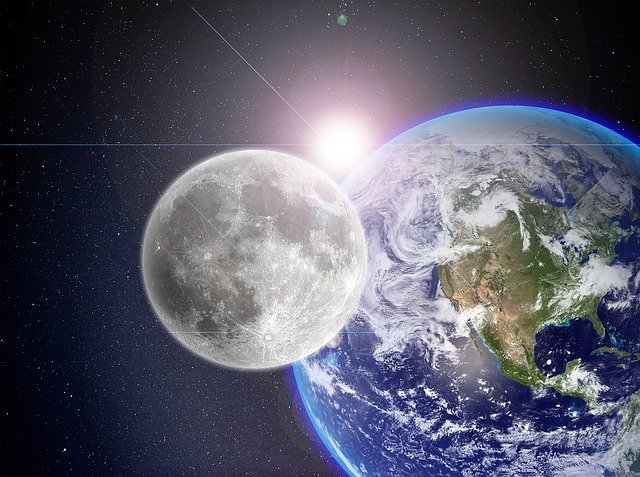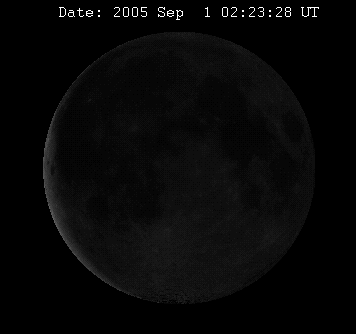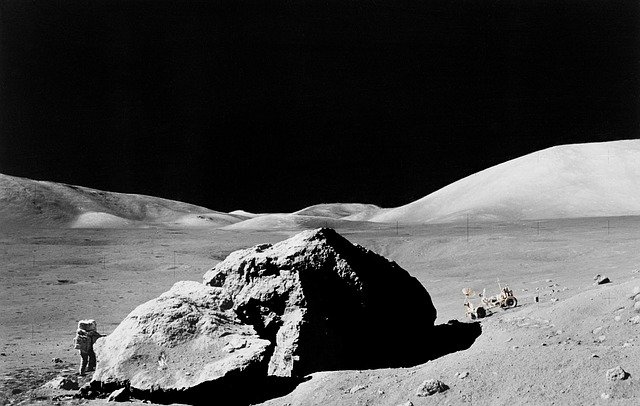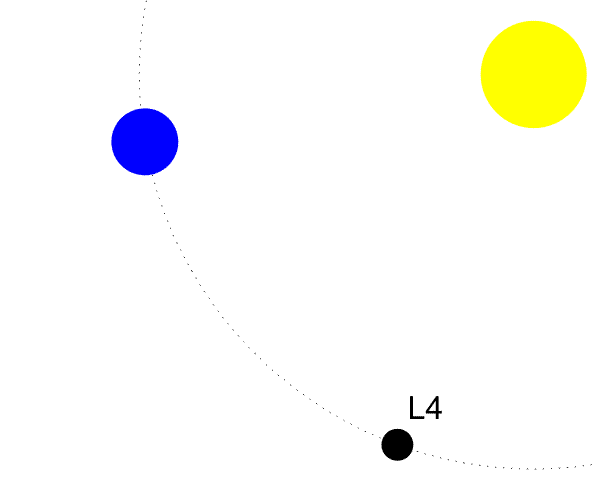Hey guys, it’s me again!!
My last post was a bit long and complicated, so I have decided to make it simple, and write it down as two different posts. I couldn't pull this stunt till today because I had an important exam on 1st July.
So here is the simpler version… Enjoy!!

Basics: Revolution vs Rotation
Let’s begin with two simple words, revolution and rotation. Are they different? Or do they mean the same thing?
Well, for starters, they both are associated with circular motion of bodies. What kind of motion do we call circular? You know it, but I’ll tell you anyways, lol. Just like every point in a circle is at the same distance from its center, a body moving with circular motion maintains a fixed distance from the axis of rotation.
Now let’s consider our earth and sun system. The earth is said to be revolving around the sun. In this case the axis of rotation is outside the earth surface, and it passes through the sun. The motion is actually elliptical, but let’s keeps things simple for this post.
And how do we have day and night? Well, the earth spins. In this case, we say earth is rotating around itself. The axis of rotation, in this case, passes through the earth surface and also through the center of the earth. Here are some images for clarification.


Our dictionaries don’t really see any difference between these terms, perhaps because they are so much similar in usage. The speed of rotation in motors is measured in rotations per minute as well as revolutions per minute and they both mean the same thing in this case.
Some well-known Facts about Moon’s movement around Earth:
Just as the earth moves around the sun, our moon too moves around our planet. It’s just that the revolution and rotation has slightly different speeds.
The speed of revolution of moon around the earth is slightly lesser than a day. And the speed of rotation of moon around its own axis is just the same as its speed of revolution around the earth. The moon completes one rotation around itself in almost exactly the same time it takes to revolve around the earth. On earth, this causes us to be able to see only one side of the moon… forever… if this wasn’t the case, we’d be able to see both the sides as the image below suggests.

Attribution: By Tomruen (Lunar_libration_with_phase_Oct_2007.gif) [Public domain], via Wikimedia Commons
The moon appears to be wobbling to and from in the image above. This is called lunar libration.
Now that we have observed and studied our moon, let’s ask some questions.
- How come planets even have moons?? And why doesn’t earth have more than one??
- Where did the only moon we have come from? Was it an asteroid captured by earth and is rotating in earth’s orbit ever since?
- Have they always been moving the same way they are moving today? Did nothing change at all, ever since the earth-moon system was born? I can answer this one right here. EVERYTHING CHANGES, that’s the only thing constant in the universe… and in life as well.
- So how have they been changing in the past? What changes will we see in the moon in future?
Let’s look at these one at a time. I think we will cover the first question and half of the second question in this post. Let’s begin!!
Where did moons in our solar system come from?
Usually, in our solar system, we see asteroids being caught in huge gravitational fields like that of sun and that of huge planets like Jupiter, Neptune, Saturn, and Uranus. Big planets have lots and lots and lots of moons. Even mars which is smaller than earth, has two moons. And unless we go ourselves to these planets and compare their crusts, we can never say for sure if they really are asteroids that got caught into the gravitational field of the planet or something else. But for now, asteroids are the prevalent explanation for moons on all the planets in our solar system, except in case of earth itself…
Apparently, our earth really is special when compared to other planets when it comes to owning a moon. Let’s look at all the other planets. The first four planets closest to the sun are small in size, and hence they have smaller gravitational influence in the region around them. The first two planets Mercury and Venus don’t even have a moon. The Earth is the first planet with a moon, and then comes mars with two moons. Jupiter has 69 known moons for sure, and it might have more but for now we are not sure about them. Similarly, Saturn has 62 with confirmed orbits, Uranus has 27 and Neptune has 14 moons while each of these gas and ice giants has some unconfirmed moons as well.
Now let’s move to our second question.
What's the story behind Earth's moon?
Was Earth’s moon an asteroid before it got trapped in earth’s gravitational field?

Well, this actually was the leading theory until the Apollo missions brought back to earth a lot of lunar rock (or simply, moon rock). It was only logical for us to think of moon as a trapped asteroid, but then studies showed us something else entirely. The moon rock was found to be a lot like that on earth. Our earth has witnessed quite a few asteroid impacts in its 4.5 billion years of lifetime. But all the samples of asteroids we studied to this date show significant difference between the rocks formed on earth and those that were found near asteroid impact sites. So it doesn’t really make any sense for the moon rock to be too similar to the rocks formed on earth, right?
And this caused the asteroid theory of moon to be quite wrong. Now a different theory is preferred. It is named the Giant Impact Theory (also known as the Big Splash, and the Theia Impact), and it is really fascinating!!
Our solar system was formed around 4.6 billion years ago. Within a hundred million years after it's birth, planets were formed. So around 4.5 billion years ago, Earth was much different… so different, that we don’t even call it earth. We named it Gaia, which was just about the size of earth. And Gaia had no moon back then. What Gaia had, was another Mars-sized planet in its orbit. Don’t be surprised, it’s quite possible. Let me explain,
There are five points near any two bodies where the gravitational pull between them is balanced. Earth and sun have such points as well. These points are called Lagrange Points (or Lagrangian points) after the famous mathematician and astronomer Joseph-Louis Lagrange who calculated them. They are simply named L1, L2, L3, L4, and L5.

Attribution: By Xander89 (File:Lagrange_points2.svg) [CC BY 3.0 (https://creativecommons.org/licenses/by/3.0)], via Wikimedia Commons
Out of these, L4 and L5 lie in the orbit of earth itself, as you can see in the above image.
So, it is okay if the Giant Impact theory suggests that there was a Mars sized planet revolving around the sun along with Gaia. This planet is called Theia, after the Greek goddess. Theia was mother of Serena, the goddess of moon. Now I guess you know what I am trying to say - Theia gave birth to moon, but how?
Well, for some reason, the orbit of Theia was disturbed. This can only happen due to some strong gravitational influence. So we can blame a planet, either Venus or Jupiter for this. The disturbed planet Theia, now moved along the orbit, towards Gaia, and this resulted in a massive head on collision between two planets. That’s what the Giant Impact in our theory is about.

Attribution: By No machine-readable author provided. Dart evader~commonswiki assumed (based on copyright claims). GFDL, CC-BY-SA-3.0 or CC BY-SA 2.5], via Wikimedia Commons
This collision was so huge that it caused the cores of these two planets to merge. Crusts were actually shattered down to the core. And obviously some pieces of crust and core were thrown out in the space. These thrown out pieces, assembled over time into what we know as present day moon. This is the prevalent theory about the origin of moon today. We’ll discuss a lot more cool stuff about this in the next post. We'll switch back to ocean energy once the next part of this post is done.
Take Care and Enjoy!!!!
Image and Gif Sources:
References:
Giant Impact Hypothesis | Revolution vs Rotation | About the Earth's moon | Plantes and their moons | Moon Rock |
Lagrange Points
Very nice post.
The only thing is that in the last animation the trajectory of Theia between L4 and Gaia seems a bit unnatural. I guess it would not orbit around a fictitious center of gravity the way it does in the animation.
Looking forward to your next post!
Great question @irelandscape. In fact, the only thing that makes sense for now is that the impact had happened. We can't even be sure whether what caused it in the first place. And due to this, we can't be sure about the extent to which Theia's orbit was disturbed. Some just guessed it was Venus and made further calculations which could possibly result in a crust-shattering, core-merging direct impact.
Plus the planets were not yet properly alligned in orbits as they are today. If we scale the time of 4.6 bilion years to 46 years of our life, 100 million years seem like the first year of our life. Solar system must have been a chaotic scratching, yelling, biting, pooping, crying baby back then, lol.
Congratulations @pratik27! You have received a personal award!
Click on the badge to view your Board of Honor.